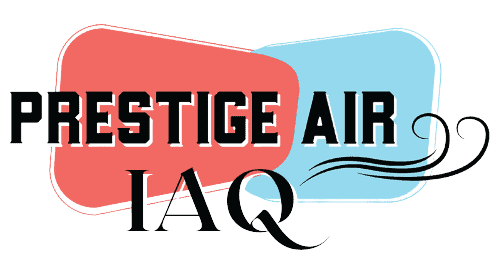Indoor Air Quality Service: 5 Guidelines
The quality of the air we breathe is essential to our health and well-being. However, the air inside our homes and offices can be up to five times more polluted than the air outside. Poor indoor air quality can cause a range of health problems, including respiratory issues, headaches, fatigue, and allergies. That’s why it’s essential to maintain good indoor air quality. In this blog post, we’ll provide a comprehensive guide to indoor air quality service.
What are the 5 guidelines?
What is Indoor Air Quality Service?
Indoor air quality service is a comprehensive approach to improving the air quality inside your home or office. It involves identifying and eliminating pollutants, controlling moisture levels, and ensuring proper ventilation. Indoor air quality service can include a range of services, such as air duct cleaning, air filtration, and humidity control.
Why is Indoor Air Quality Important?
Indoor air quality is important for several reasons. Firstly, poor indoor air quality can cause health problems, including respiratory issues, headaches, fatigue, and allergies. Secondly, poor indoor air quality can worsen existing health problems, such as asthma and allergies. Finally, poor indoor air quality can affect the comfort and productivity of the occupants of a building.
What are the Common Indoor Air Pollutants?
There are several common indoor air pollutants that can affect the air quality inside your home or office. These include:
- Volatile Organic Compounds (VOCs) – VOCs are gases that are emitted from various products and materials, such as paints, adhesives, and cleaning products.
- Particulate Matter – Particulate matter refers to tiny particles that can be found in the air, such as dust, pollen, and pet dander.
- Mold and Mildew – Mold and mildew can grow in areas of high humidity, such as bathrooms and kitchens. They can cause respiratory issues and allergies.
- Carbon Monoxide – Carbon monoxide is a colorless, odorless gas that can be produced by faulty gas appliances, such as furnaces and water heaters.
- Radon – Radon is a radioactive gas that can enter homes through cracks in the foundation. It can cause lung cancer.
How to Improve Indoor Air Quality?
There are several ways to improve indoor air quality. These include:
- Air Duct Cleaning – Air duct cleaning involves removing the buildup of dust and other contaminants from your HVAC system. This can improve the efficiency of your system and improve the air quality inside your home or office.
- Air Filtration – Air filtration involves using filters to trap pollutants in the air. High-efficiency particulate air (HEPA) filters are particularly effective at trapping particulate matter.
- Humidity Control – Humidity control involves maintaining proper humidity levels inside your home or office. This can prevent the growth of mold and mildew and improve the air quality inside your building.
- Ventilation – Proper ventilation is essential for maintaining good indoor air quality. It involves ensuring that your HVAC system is properly sized and that your building has adequate ventilation.
- Use of Natural Cleaning Products – Many household cleaning products contain VOCs that can affect indoor air quality. Using natural cleaning products can help reduce the amount of pollutants in the air.
Benefits of Indoor Air Quality Service
There are several benefits to indoor air quality service. These include:
- Improved Health – Indoor air quality service can help reduce the risk of health problems associated with poor indoor air quality, such as respiratory issues, headaches, and allergies.
- Increased Comfort – Improved indoor air quality can increase the comfort of the occupants of a building. Proper humidity levels and ventilation can help regulate the temperature inside your building and improve air circulation.
- Increased Energy Efficiency – Indoor air quality service can improve the efficiency of your HVAC system, reducing energy consumption and lowering your utility bills.
- Reduced Maintenance Costs – Regular indoor air quality service can help reduce the need for costly repairs to your HVAC system and prolong the lifespan of your equipment.
- Improved Airflow – Clean air ducts and filters can improve the airflow in your home or office, making it easier for your HVAC system to circulate air and maintain a comfortable environment.
How to Choose an Indoor Air Quality Service Provider
When choosing an indoor air quality service provider, there are several factors to consider. These include:
- Experience and Reputation – Look for a service provider with extensive experience in indoor air quality services and a good reputation in the industry.
- Certifications and Licensing – Ensure that the service provider is properly licensed and certified to perform indoor air quality services.
- Services Offered – Look for a service provider that offers a comprehensive range of indoor air quality services, such as air duct cleaning, air filtration, and humidity control.
- Equipment and Technology – Look for a service provider that uses advanced equipment and technology to provide effective indoor air quality services.
- Customer Reviews – Check online customer reviews and testimonials to gauge the quality of service provided by the company.
Indoor Air Quality Service Conclusion
Indoor air quality service is essential for maintaining a healthy and comfortable indoor environment. Poor indoor air quality can cause a range of health problems, affect the comfort of occupants, and increase energy consumption. To improve indoor air quality, it’s important to identify and eliminate pollutants, control moisture levels, and ensure proper ventilation. Choosing the right indoor air quality service provider can help ensure that your indoor air quality is optimized for health and comfort.







